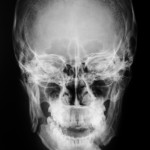
Anterior mandibular fractures (AMFs) account for around 17% of mandibular fractures. A variety of fixation methods have been used, lag screws, internal fixation with miniplates, 2-miniplates and 3-D plates.
The aim of this review was to determine which fixation method for AMFs had the fewest complications.
Methods
Searches were conducted in PubMed, Cochrane Database of Systematic Reviews, the Cochrane Central Register of Controlled Trials, Embase, Medline, CINAHL, and the Electronic Journal Center. This was supplemented by a manual search of several oral and maxillofacial related journals and a search for on-going trials. Randomised or quasi-randomized controlled trials (RCTs), controlled clinical trials (CCTs), or retrospective studies comparing postoperative complications between or among fixation techniques (eg, lag screws, 3D plates, standard miniplates) in the management of AMFs were considered. Risk of bias was assessed.
Results
- 13 studies were included (8 RCTs, 3 CCTs, 2 retrospective studies).
- 7 studies were at low risk of bias, 3 at moderate risk and 3 at high risk.
- 7 studies (224 patients) compared 3D to standard miniplates
- 4 studies (1027 patients) compared lag screw to miniplates
- 2 studies (702 studies) compared one to two miniplates
| Cumulative overall complicationsOdds Ratio (95% CI) | |
| Lag Screws Vs Miniplates | 0.29(0.18 to 0.4657)* |
| 3-D Vs Standard Miniplate | 0.94(0.47 to 1.87) |
| One Plate Vs Two Miniplates | 0.28(0.19 to 0.42)* |
* Statistically significant
Conclusions
The authors concluded
The results of this meta-analysis revealed that the use of both lag screws and 1 plate plus an arch bar were superior to 2 miniplates in reducing the incidence of postoperative complications in the management of AMFs. Also, there were significantly shorter operating times with lag screws and 3-dimensional miniplates over 2 miniplates in the fixation of AMFs.
Commentary
This group of researchers has produced a number of recent reviews looking at complications following various mandibular fractures (Dental Elf 3rd Oct- 2014). They have all used a broad search strategy and followed a similar search strategy. As in previous reviews they have chosen to include retrospective studies, which have a higher risk of bias. Interestingly despite indicating that only 8 of the 13 studies were RCTs their quality assessment of studies indicated that only two did not involve a random selection of the population. As there were 7 RCTs in would have been interesting to see what the impact of restriction the meta-analysis to these studies would have had on the results.
Links
Surgical Management of Anterior Mandibular Fractures: A Systematic Review and Meta-Analysis Al-Moraissi, Essam Ahmed et al. Journal of Oral and Maxillofacial Surgery http://dx.doi.org/10.1016/j.joms.2014.07.042
